Universal Search
Universal Search is the most used feature within TradeView. At any point within the application, access Universal Search by clicking on the magnifying glass icon in the upper right hand corner of the page and typing in any company, stock ticker, product, location, or shipment identifier.
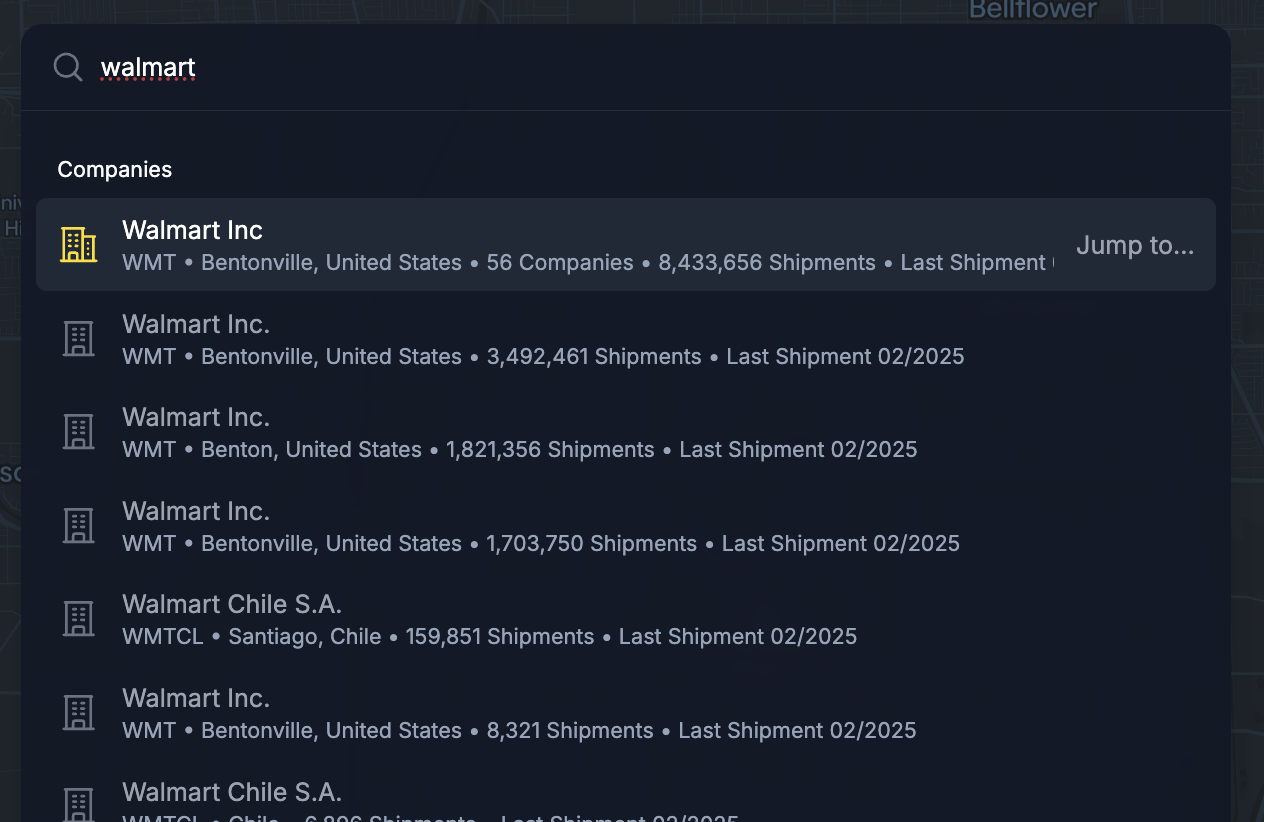
You will see that Universal Search is built as a suggestive search, meaning that typing in just “walm” will reveal Walmart. The search is also intelligent, and in the case of searching for a large company, the first result will show the company’s global umbrella of results. You can also ensure you have selected the right company by seeing its preview of headquarters, stock ticker, and number of shipments seen in the last 2 years. Searching for a location is very similar, and our recommendation is that if your search is for a specific port, entering the UNLOCODE will return the most accurate location. I.e. USLAX would be your way of returning an option for the Port of Los Angeles. When the suggestions drop down beneath, you may have to scroll further down to find your intended target search. Recent searches (the most recent 5) will also be preserved, so you can access them at the bottom of the drop down results.
Searching for a product works the same as Globe Explorer’s search, in that you can type in the words contained within the HS Code Description, or simply type in the specific HS Code numerical value.
Corporate Groups & Company Profiles
Corporate group and company profile pages can be accessed from within many parts of the application, but the most common way of viewing a corporate group’s page is by searching for the company within Universal Search. For example, typing in “Walmart” and selecting the first result will bring you to Walmart’s Corporate Group page.
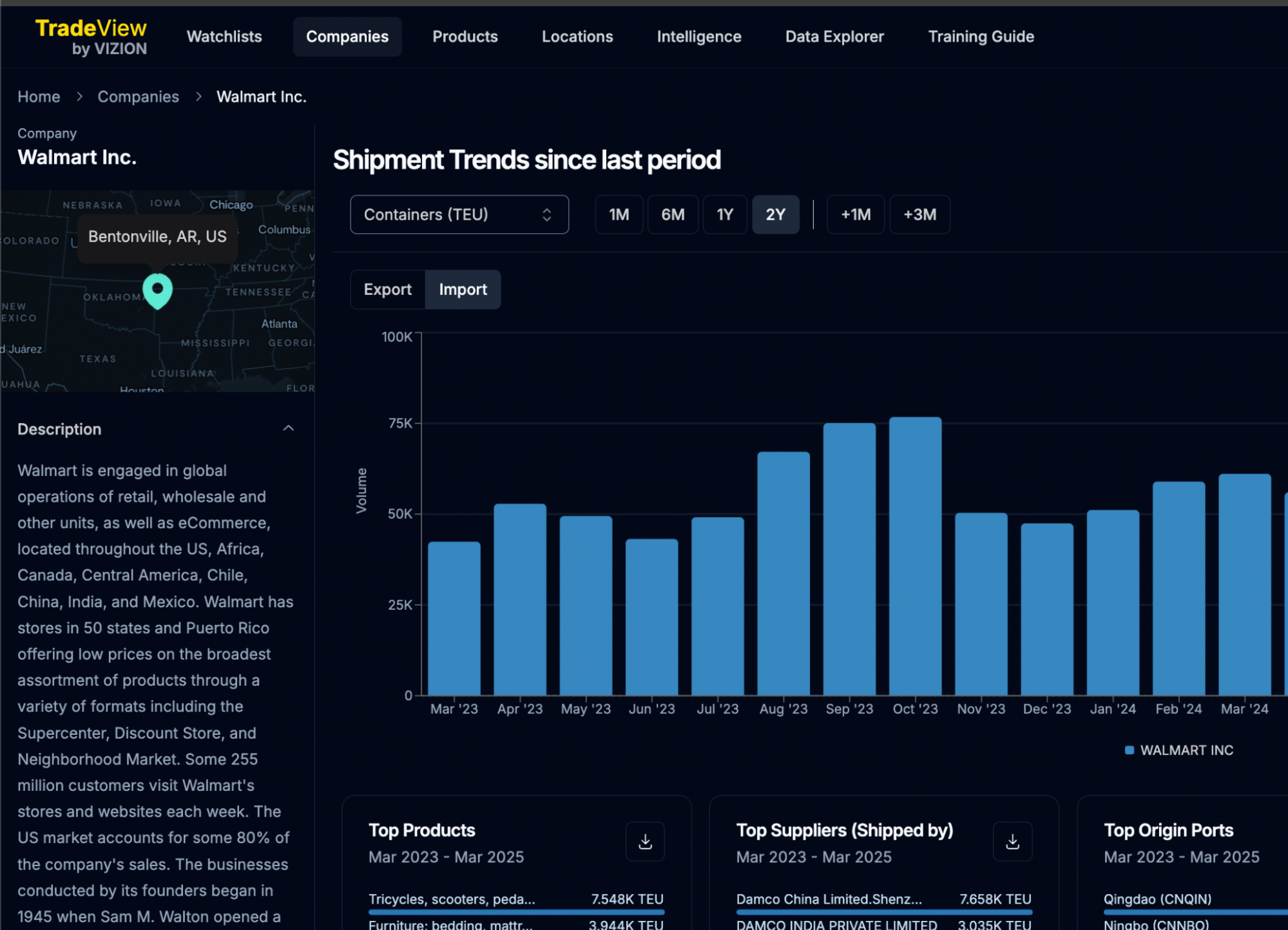
You can also view any specific company within Walmart’s group by searching for it by name in Universal Search, or by selecting it from within the Corporate Group view (within the left hand margin of a Corporate Group page). The initial load will bring back the last 2 years of completed shipments, with each month showing a year-over-year comparison. The trends view can be toggled to show TEU, Estimated Cargo Value, Package Weight (in kilograms), Package Count, Total Bookings, and Total Shipments. The trend can be shown as a bar chart or a line graph, and can be toggled to display Import (Walmart as the Consignee) or Export (Walmart as the Shipper).
A key feature within this page is the ability to select +1M or +3M, which will display future scheduled arrival dates by week for either the next 1 month or the next 3 months. This utilizes a unique data component within Tradeview, which accesses Booking transactions, rather than only completed shipments.

Beneath the main bar or line graph view, you will see table summaries that rank the Top Products (by HS Code), Top Suppliers (also known as Shipper or Exporter), Top Origin Ports, Top Destination Ports, and Top Carriers (listed by Carrier Code). All of these are clickable to view in their own profile page, to download via .JPEG, or to click View Bills and open a custom view inside Data Explorer.
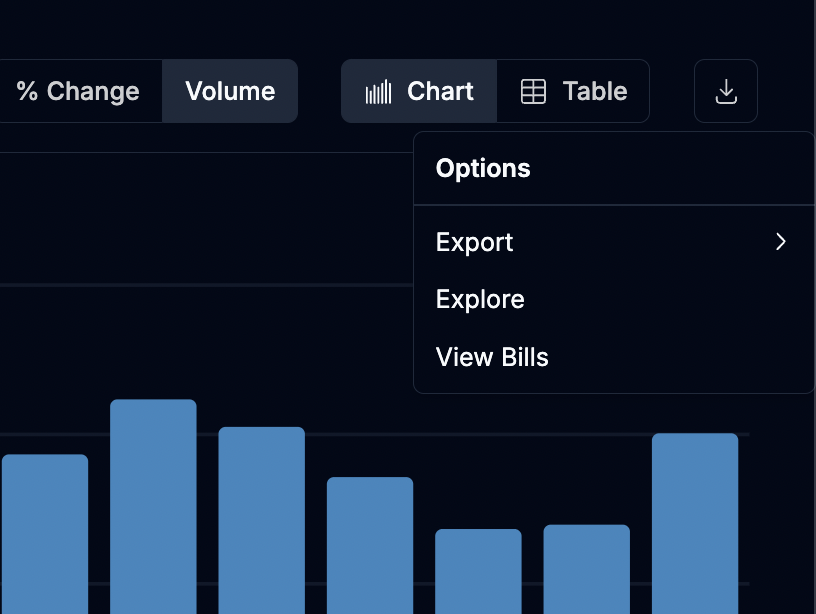
At any point, the data view can be downloaded by clicking the downward-pointing arrow on the right hand side of the page (to the right of Table) and can be downloaded via CSV or JPEG. Clicking on this same downward arrow will also allow you to further filter this view within Data Explorer by clicking on Explore, and clicking on View Bills will open up a specific Bill of Lading view within Data Explorer.
Lastly, you will see Activity, Network, and Products as additional tabs within a company or corporate group page. Activity will display via line graph the amount of new bookings entered by this company. Products will organize in a table view the HS codes in this company’s shipments, and Network opens an interactive view of this company’s Tier 1 and Tier 2 Supplier Network from recently completed shipments. This Network view is an innovative data display of container flows from Exporter to Importer, as well as indirect relationships that Importers have to Tier 2 suppliers. The larger nodes in the network represent larger volumes of shipments brought in from that given supplier. The search filters on the left hand margin allows for specific suppliers to be queried, as well specific types of product.
Product Profiles
Product Profile pages can be accessed from within many parts of the application, but the most common way of viewing a product profile page is through Universal Search. The product profile page summarizes global shipping activity for the selected HS code from the last 90 days of completed shipments.
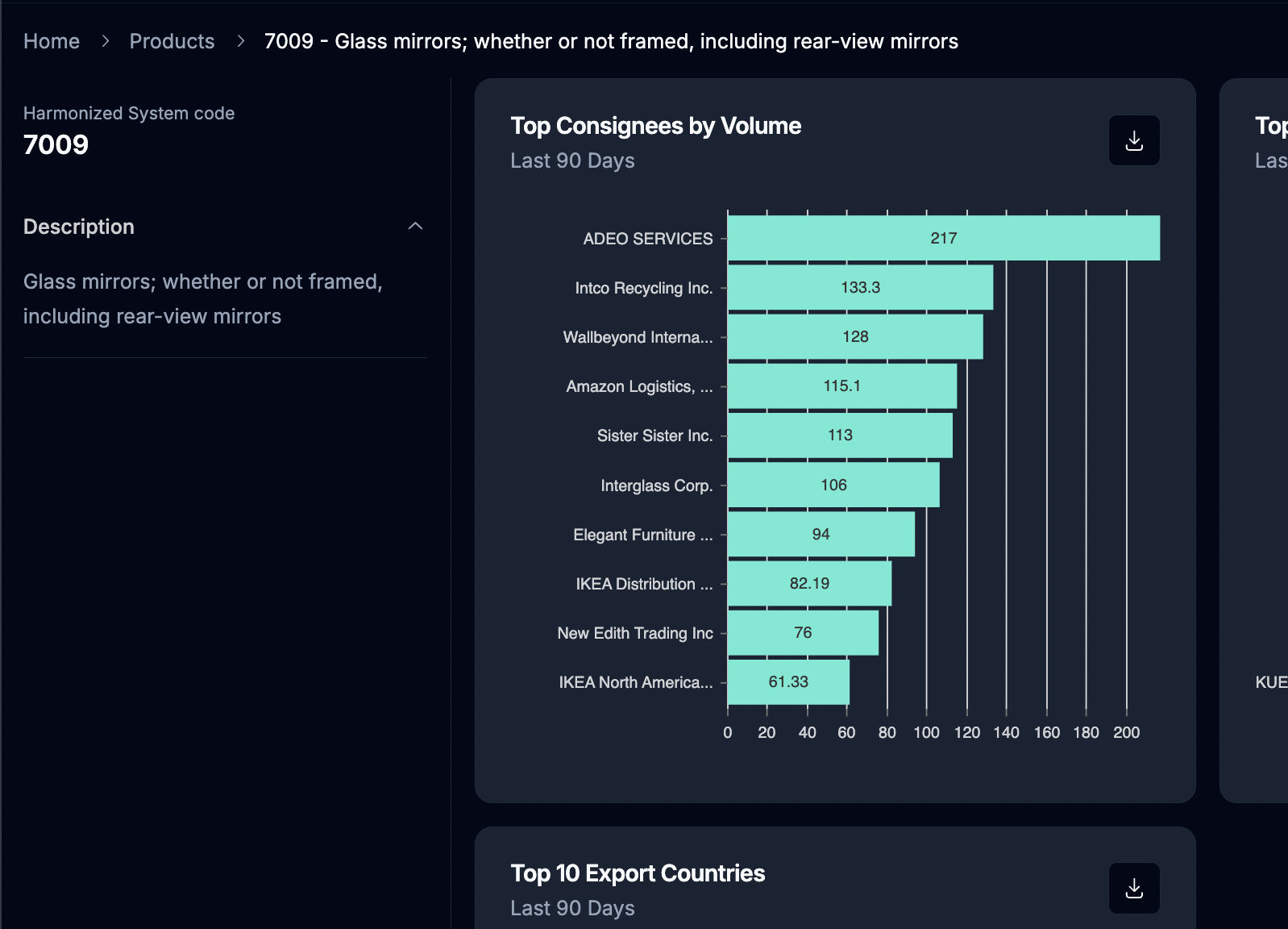
You will see several data summary displays, including Top Consignees (by value and volume), Top Import Countries, and Top Export Countries. Each Top Consignee is also clickable from within the view, and each individual graph can be downloaded via the downward pointing arrow, selecting Export, and downloading via .JPEG.
Location Profiles
Location Profile pages can be accessed from within many parts of the application, but the most common way of viewing a location profile is through universal search. Searching for USLAX, for example, returns the profile page for the Port of Los Angeles. This port is indicated in Tradeview shipments as either the Origin Port, Origin City, Destination Port, or Destination City. Pivoting the table for Import will show the location as the Destination, while selecting Export will show this location as the Origin.
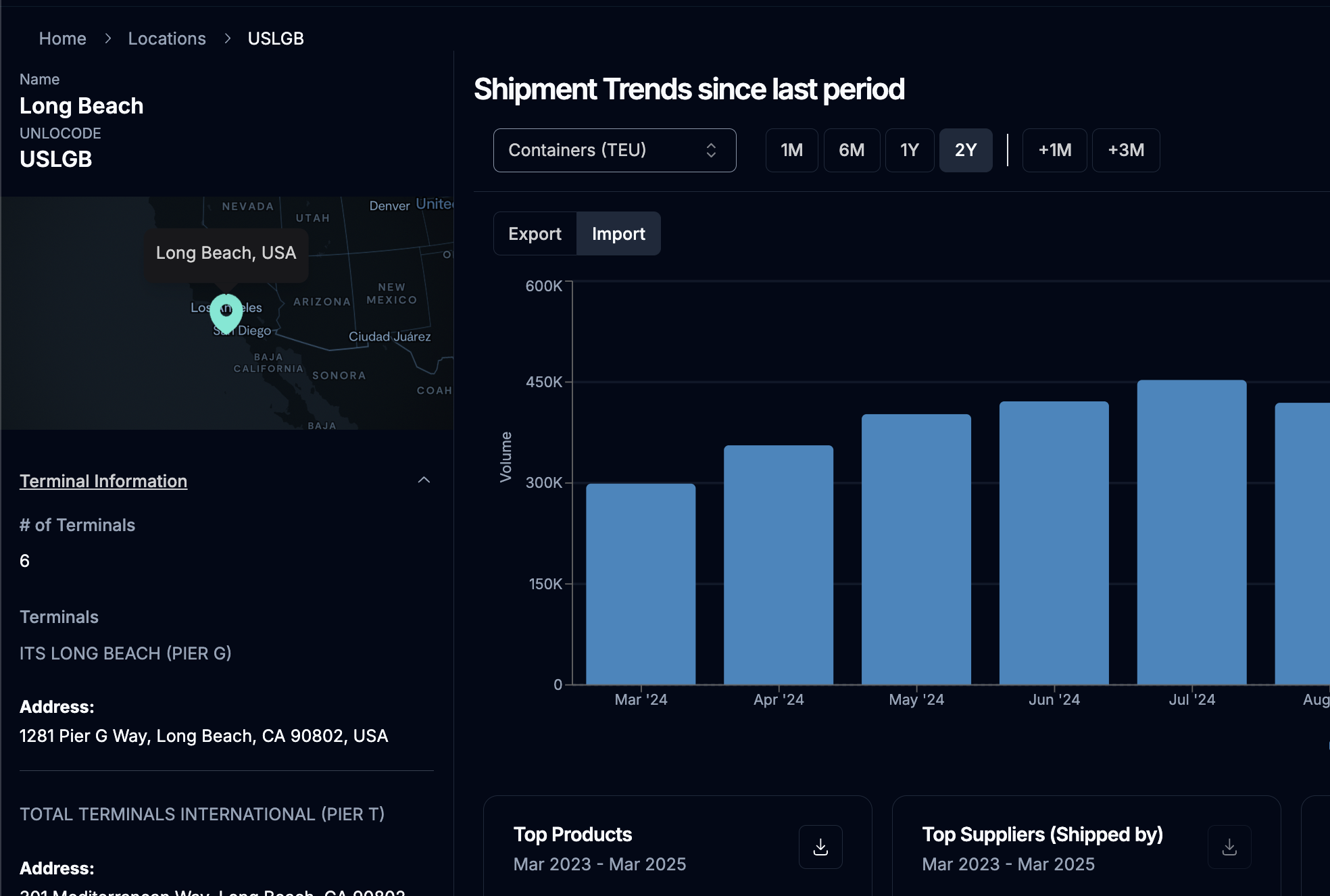
Similar to Company and Corporate Group pages, Location Profiles will also show year over year change, future scheduled arrivals for 1 month and 3 months, and allow values to be toggled to Containers (TEU), Package Value (USD, Package Weight (Kilograms), Package Count, Total Bookings, and Total Shipments. Similar data summaries are seen below the chart for Top Products, Top Suppliers, Top Origin / Destination Ports, and Top Carriers (by Ocean carrier code). The same export capability exists within the main chart and each data breakdown beneath it by selecting the downward arrow, clicking Export, and selecting .JPEG or .CSV. For further filtering from within a Location search, simply click the downward arrow to the upper right of the main chart and select Explore.
Intelligence Co-pilot
Vizion leverages AI technology to provide a conversational experience around the research of shipments, companies, products, and locations. Simply ask your questions in natural language and the Vizion intelligence co-pilot will reply with full pro's responses and data visualizations.
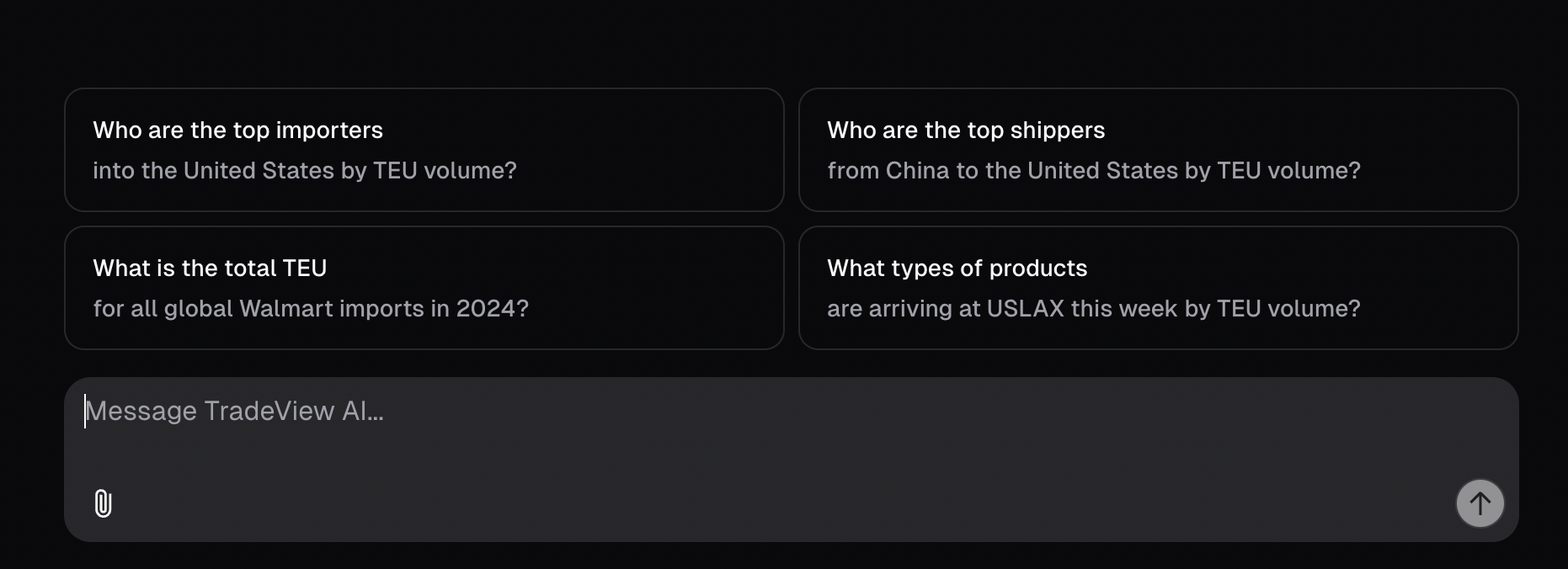
Continue past conversations using the left side panel to select the conversation you would like to continue.
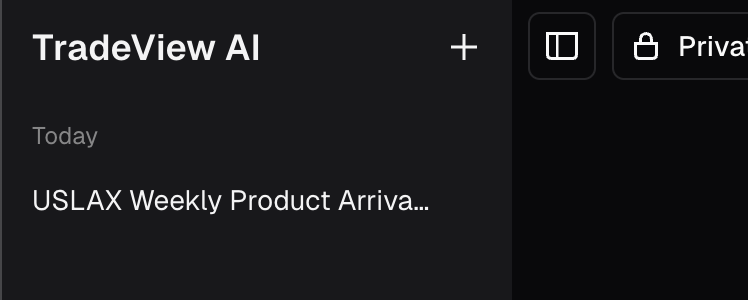
Toggle SQL view to reveal the query details fueling the AI response. This is useful for Data Engineers and Data Scientists who may be using TradeView Snowflake access for independent research.
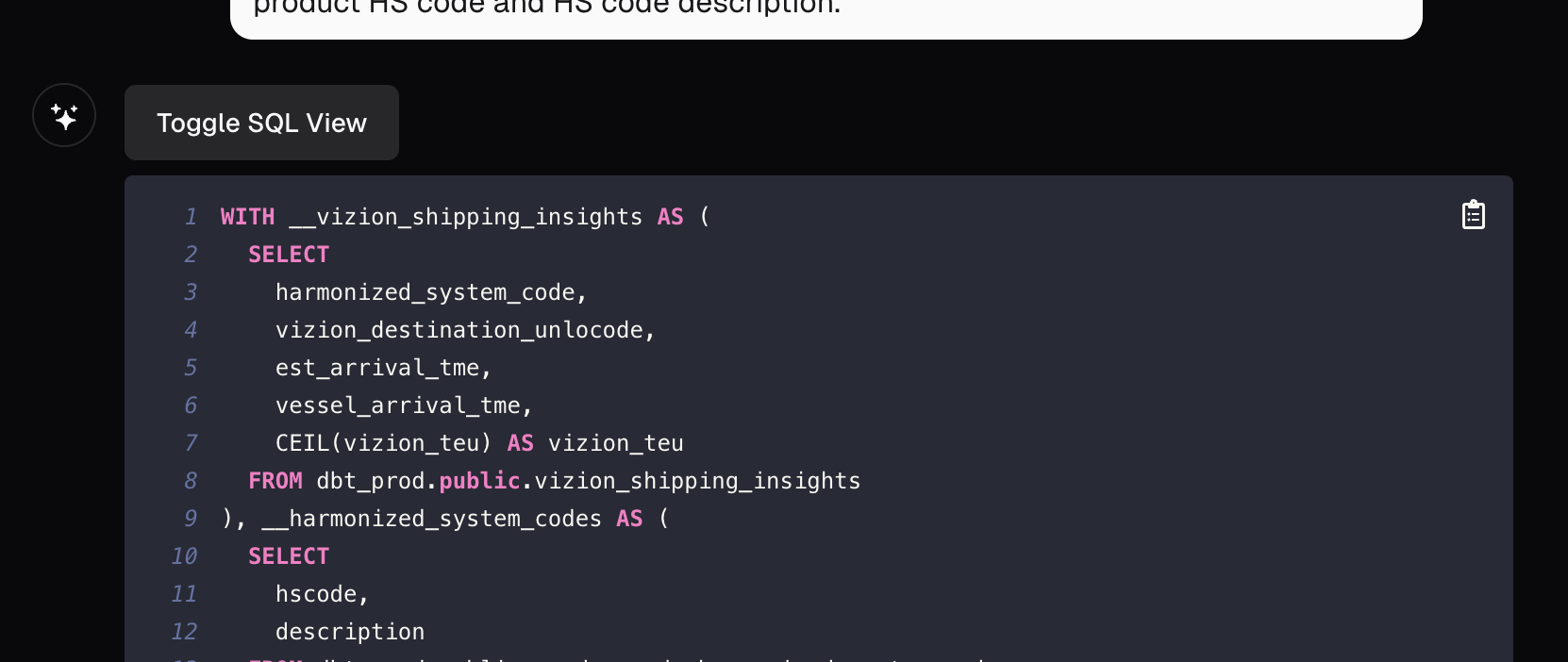
Watchlists
Watch lists are user generated lists of a collection of companies. Each of your watch lists can be found in the watch list section. Watch lists provide charts and graphs of key metrics around each chosen company.
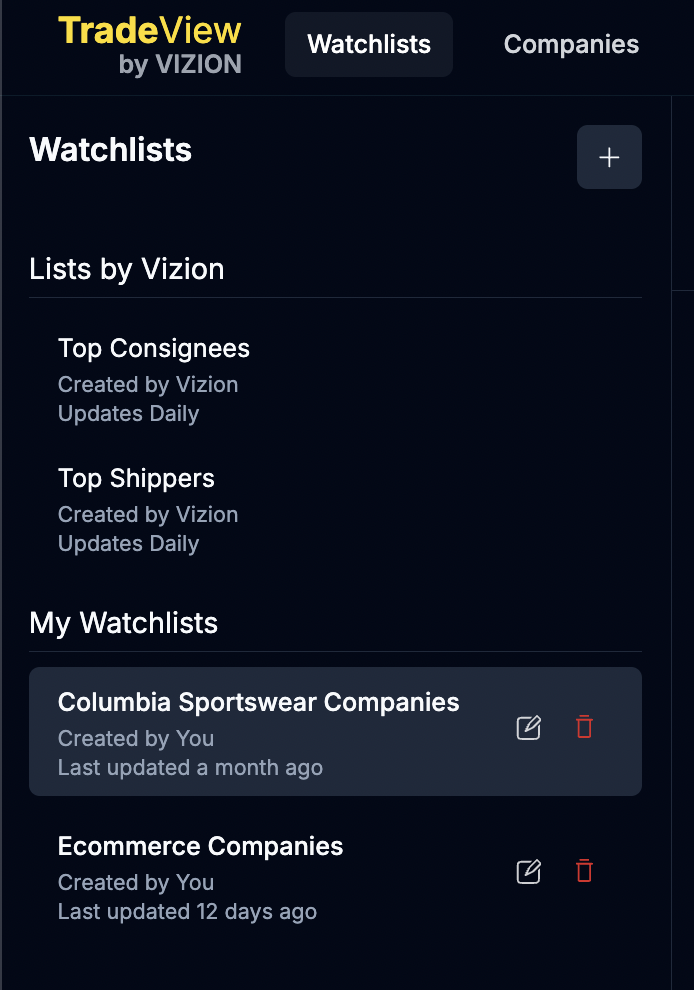
Create a Watchlist by clicking on the “+” button in the left side panel. Then search and add company profiles to the Watchlist. Lastly, click “Save” in the top right corner.
Updated 3 months ago